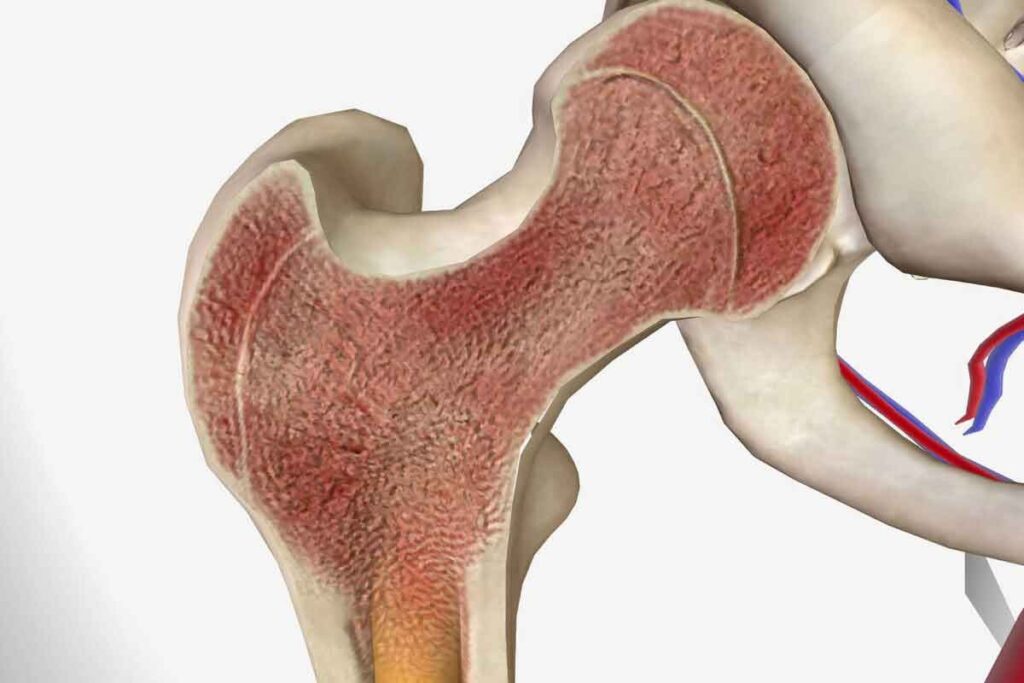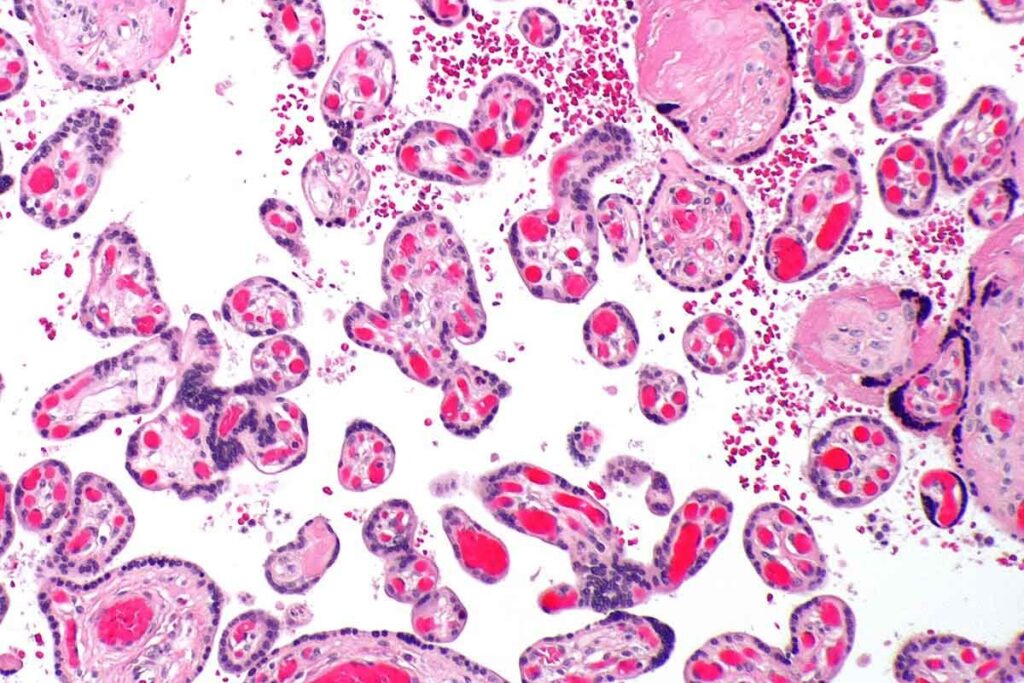
At Liv Hospital, we know how vital it is to give detailed info on serious bone marrow issues like marrow hypoplasia. This problem means the bone marrow has fewer cells, leading to less blood cell production. It’s key for patients to know about the causes, symptoms, and treatments.
We’ll dive into the main points about bone marrow hypoplasia. This includes what causes it, its signs, and how it’s treated. Our goal is to help patients worldwide understand their treatment path better.

Bone marrow is found in the cavities of bones and is key to making new blood cells. It’s a complex tissue that helps our health by creating red, white blood cells, and platelets.
Normal bone marrow has a mix of cells that produce blood, fat cells, and connective tissue. The mix changes with age and health. In adults, it’s mostly blood-making cells and fat.
Bone marrow makes blood cells through hematopoiesis. It turns stem cells into different blood cells. Red blood cells carry oxygen, white blood cells fight infections, and platelets help blood clot.
This process is controlled by growth factors and cytokines. Any problem can cause issues like bone marrow hypocellularity or hypoplasia of bone marrow.
Healthy bone marrow is vital for our well-being. It keeps making blood cells for oxygen, immune function, and clotting. Things like toxins, some medicines, and viruses can harm it.
| Cell Type | Function | Disease Association |
| Red Blood Cells | Carry oxygen throughout the body | Anemia |
| White Blood Cells | Crucial for immune defense | Infections, Leukemia |
| Platelets | Key role in blood clotting | Bleeding Disorders |
Knowing about bone marrow’s role in health and disease is important. Issues like hypoplasia of bone marrow show why keeping it healthy is key. We need to act fast if problems happen.

Marrow hypoplasia is a condition where the bone marrow doesn’t make enough blood cells. This can cause problems like anemia, infections, and bleeding issues.
Hypoplastic marrow means the bone marrow has fewer cells than it should. Doctors find this by looking at a bone marrow biopsy. They check for the right number of cells that make blood.
They look at how many cells are in the marrow. If there are fewer cells, the marrow can’t make enough blood cells.
Bone marrow hypocellularity means the marrow has too few cells. This can happen for many reasons, like damage or toxins.
Key features of bone marrow hypocellularity include:
It’s important to know the difference between marrow hypoplasia and aplasia. Both affect blood cell production but in different ways.
Marrow hypoplasia means there are fewer cells in the marrow. Aplastic anemia or bone marrow aplasia means the marrow can’t make blood cells because it has lost too many stem cells.
| Characteristics | Marrow Hypoplasia | Bone Marrow Aplasia |
| Cellularity | Reduced cellularity | Significantly reduced or absent cellularity |
| Blood Cell Production | Decreased | Severely decreased or absent |
The study of bone marrow hypoplasia shows us who is most likely to get it. Knowing who is at risk helps doctors find and treat these people early. This is key to preventing and diagnosing the condition.
Bone marrow hypoplasia can happen at any age, but some ages are more common. It’s more common in older adults, but it can also affect the young. The gender of those affected is not clear-cut, with some studies showing a slight lead in males and others finding no difference.
Key demographic factors include:
Where you live can also affect your risk of bone marrow hypoplasia. Some places have higher rates due to environmental factors or genetics. For example, areas with more radiation or chemicals might see more cases.
Notable geographical factors include:
Some medical conditions make you more likely to get bone marrow hypoplasia. These include autoimmune diseases, viral infections, and certain medications or toxins. Knowing these can help doctors catch and treat the condition early.
Predisposing conditions include:
In conclusion, bone marrow hypoplasia is influenced by many factors. These include age, gender, where you live, and your medical history. Understanding these helps doctors target their efforts to help those at risk.
Marrow hypoplasia comes from a mix of viral infections and toxins. Knowing these causes helps doctors diagnose and treat it better.
Viruses can harm the bone marrow’s blood cell production. Viruses like hepatitis and HIV can infect the marrow or trigger an immune attack.
Hepatitis viruses can destroy bone marrow cells, causing hypoplasia. HIV can also weaken the marrow, either directly or through the immune system’s reaction.
Some drugs can cause marrow hypoplasia as a side effect. This includes chemotherapy, antibiotics, and NSAIDs. These drugs can damage or disrupt bone marrow cells.
Chemotherapy, for example, kills cancer cells by weakening the bone marrow. But this can sometimes lead to hypoplasia.
Environmental toxins are a big risk for marrow hypoplasia. Toxins like benzene, pesticides, and heavy metals can harm the bone marrow. This reduces blood cell production.
Benzene is known to cause bone marrow failure. Long-term exposure to benzene can lead to aplastic anemia, similar to marrow hypoplasia.
Autoimmune diseases can also cause marrow hypoplasia. In conditions like aplastic anemia, the immune system attacks the bone marrow. This leads to its destruction and hypoplasia.
Understanding how autoimmune diseases affect marrow hypoplasia is key. It helps in finding treatments that support the bone marrow and control the immune system.
| Cause | Description | Examples |
| Viral Infections | Viruses can directly infect or trigger an immune response d,,amaging the bone marrow. | Hepatitis viruses, HIV |
| Medication and Drugs | Certain drugs can cause marrow suppression as a side effect. | Chemotherapy agents, certain antibiotics, NSAIDs |
| Environmental Toxins | Exposure to toxins can damage the bone marrow. | Benzene, pesticides, heavy metals |
| Autoimmune Processes | The immune system attacks the bone marrow cells. | Aplastic anemia |
Marrow hypoplasia shows many symptoms because it affects the bone marrow badly. It means there are fewer cells in the bone marrow. This leads to fewer blood cells being made, causing different symptoms.
Anemia is a big symptom of marrow hypoplasia. It happens when there aren’t enough red blood cells. This can make you feel tired, weak, and short of breath. Your skin might look pale, too.
These signs can really affect your life. Simple tasks can become hard to do.
With marrow hypoplasia, there are fewer white blood cells. White blood cells help fight off infections. So, people with this condition get sick more easily.
These infections can be mild or serious. They might need quick medical help.
There are also problems with platelets because of marrow hypoplasia. Platelets help blood to clot. Without enough, you might bruise easily or bleed a lot.
You could get nosebleeds or bleed longer than usual after injuries. This is because your body can’t make blood clots well.
People with marrow hypoplasia also have other symptoms. These include fever, losing weight, and feeling generally unwell. These signs show how marrow hypoplasia affects your whole body.
| Symptom Category | Common Symptoms |
| Anemia-Related | Fatigue, weakness, shortness of breath, pale skin |
| Infection-Related | Frequent infections, fever, sepsis |
| Bleeding Disorders | Easy bruising, nosebleeds, prolonged bleeding |
| Systemic/Constitutional | Fever, weight loss, general malaise |
Understanding how to diagnose hypoplasia of bone marrow is key to good patient care. To diagnose this condition, doctors use several tests. These tests check how well the bone marrow works and how many cells it has.
First, doctors look at blood counts to spot problems. If blood cell counts are off, it might mean the bone marrow isn’t working right. We look for:
These signs point to a problem with blood cell production. This means we need to dig deeper.
A bone marrow biopsy and aspiration are key to diagnosing hypoplasia. This procedure takes a bone marrow sample for study. We check:
A bone marrow biopsy shows hypoplasia by revealing fewer cells in the marrow.
Cytogenetic and molecular tests find genetic issues linked to bone marrow hypoplasia. These tests help us:
These tests are vital for figuring out what’s causing hypoplasia and planning treatment.
When diagnosing marrow hypoplasia, we must think of other conditions that might look similar. Other conditions to consider are:
| Condition | Characteristics |
| Aplastic Anemia | Severe or total lack of bone marrow cells. |
| Myelodysplastic Syndromes | Disordered blood cell production. |
| Leukemia | Malignant growth of blood cells. |
Getting the diagnosis right is key to the right treatment.
As a medical expert, a hematologist says, “A detailed diagnostic process is essential. It helps find the cause of bone marrow hypoplasia and plan the best treatment.”
Hypoplastic anemia is when the bone marrow can’t make enough red blood cells. This shows how important bone marrow is for making blood cells.
Hypoplastic anemia happens because of problems in the bone marrow. This makes it hard for the marrow to make red blood cells. Red blood cells carry oxygen to all parts of the body.
“The bone marrow’s failure to produce adequate red blood cells is a hallmark of hypoplastic anemia, underscoring the need for a thorough understanding of its underlying causes,” say doctors.
People with hypoplastic anemia often feel tired, weak, and have trouble breathing. These symptoms depend on how bad the anemia is and why the marrow isn’t working right.
To diagnose hypoplastic anemia, doctors look at symptoms, lab tests, and bone marrow biopsies. Classifying it helps doctors know how to treat it.
Diagnostic criteria include:
Understanding hypoplastic anemia is key to helping patients with marrow hypoplasia. By knowing its causes, symptoms, and how to diagnose it, doctors can give better care.
Treating bone marrow hypocellularity requires a mix of supportive care, immunosuppressive therapy, and bone marrow transplantation. We will discuss the different ways to manage this condition.
Supportive care is key in handling symptoms and complications of bone marrow hypocellularity. It includes blood transfusions for anemia and thrombocytopenia. Antibiotics are also used to prevent and treat infections.
Nutritional support and hydration are vital for overall health. Patients might need dietary changes and supplements to get enough nutrients.
Immunosuppressive therapy is a main treatment for bone marrow hypocellularity. It aims to reduce the immune system’s attack on the bone marrow. Medications like cyclosporine and antithymocyte globulin are used.
The right immunosuppressive regimen depends on the cause of hypocellularity and the patient’s health. We watch patients closely for how well they respond and any side effects.
Growth factors help stimulate blood cell production in the bone marrow. Granulocyte-colony stimulating factor (G-CSF) is used to increase neutrophil production and lower infection risk.
Other growth factors support red blood cell and platelet production. The goal is to improve blood cell counts and reduce transfusion needs.
Bone marrow transplantation is a possible cure for bone marrow hypocellularity. It replaces the patient’s diseased marrow with healthy marrow from a donor.
We consider transplantation for patients not responding to immunosuppressive therapy or with severe disease. The process requires careful planning and monitoring to avoid risks and complications.
The table below outlines the main treatment strategies for bone marrow hypocellularity:
| Treatment Strategy | Description | Goals |
| Supportive Care | Blood transfusions, antibiotics, nutritional support | Manage symptoms, prevent complications |
| Immunosuppressive Therapy | Cyclosporine, antithymocyte globulin | Suppress the immune system, promote marrow recovery |
| Growth Factor Administration | G-CSF, other growth factors | Stimulate blood cell production |
| Bone Marrow Transplantation | Replace diseased marrow with healthy donor marrow | Potentially curative, restore normal marrow function |
It’s important to know the complications of marrow hypoplasia for good patient care. We see how different things can affect how the disease goes.
Marrow hypoplasia can turn into bone marrow aplasia. This is when the bone marrow can’t make blood cells. Many things can cause this, like the disease’s cause, treatment success, and patient health.
Key factors influencing progression include:
People with marrow hypoplasia get sick more easily because their immune systems are weak. It’s key to fight these infections well. This often means using medicines and other care.
Effective management strategies include:
The long-term effects of marrow hypoplasia can be significant. They can affect many parts of a person’s life. These effects might include long-lasting anemia, getting sick easily, and damage to the bone marrow.
Keeping an eye on the disease is key to managing marrow hypoplasia well. This means checking blood counts, doing bone marrow biopsies, and other tests. These help see how the disease is changing and if treatments are working.
Monitoring strategies should be tailored to the individual patient, taking into account:
Managing marrow hypoplasia needs a full plan. This includes lifestyle changes and medical care. We’ll show you how to handle this condition well.
Living with marrow hypoplasia means making some changes. Regular exercise, like walking or yoga, can keep you strong and less tired. But don’t push too hard and talk to your doctor first.
It’s also key to avoid getting sick. Wash your hands a lot, stay away from sick people, and get all your shots.
Eating right is very important for marrow hypoplasia patients. Eat foods full of essential nutrients like proteins, vitamins, and minerals. Foods with antioxidants, like fruits and veggies, can also help.
Talking to a dietitian can help make a meal plan just for you.
Stopping infections is key in managing marrow hypoplasia. Good hygiene is important. We also suggest:
Dealing with marrow hypoplasia is tough, not just physically but emotionally, too. Psychological support is vital. Look for help from mental health experts, support groups, or online forums.
“The emotional support I received from my support group has been invaluable. It’s comforting to connect with others who understand what I’m going through.”
— A patient with marrow hypoplasia
Keeping in touch with loved ones also helps a lot. It gives you emotional support and practical help.
By following these tips, people with marrow hypoplasia can manage their condition better. We’re here to offer all the support and advice you need.
Research on marrow hypoplasia is moving forward fast. We now know more about its causes, symptoms, and how to treat it. Studies have found new genes and ways to improve treatments like bone marrow transplants.
Recent studies have also looked into gene therapy and targeted treatments. This is all thanks to ongoing research. For example, PubMed Central has published important findings.
Looking ahead, we aim to make diagnoses better and understand how genes affect the condition. We also want to develop new gene technologies. These steps are key to improving care and finding treatments that work for each patient.
By keeping up the research, we can learn more about marrow hypoplasia. This will help us find better treatments. It’s a step towards better care and hope for those dealing with this condition.
Marrow hypoplasia is when the bone marrow doesn’t make enough blood cells. This can cause health problems.
Causes include viral infections, some medicines, toxins, and autoimmune diseases that harm the bone marrow.
Symptoms include tiredness from anemia, getting sick easily, bleeding issues, and feeling weak or short of breath.
Doctors use blood tests, bone marrow biopsies, and special tests to check the bone marrow’s health.
Hypoplasia means fewer cells in the bone marrow. Aplasia means the marrow can’t make blood cells at all.
Treatments include supportive care, medicines to fight off infections, growth factors, and sometimes a bone marrow transplant.
Yes, it can lead to worse conditions like aplasia, infections, and long-term health issues if not treated.
Patients can manage it by making lifestyle changes, following a healthy diet, preventing infections, and getting support.
Hypoplastic anemia occurs when the bone marrow doesn’t make enough red blood cells, causing anemia and symptoms.
Risk factors include certain health conditions, toxins, and some medicines that can harm the bone marrow.
Have questions or need assistance? Our team is here to help you with appointments, services, or general inquiries.